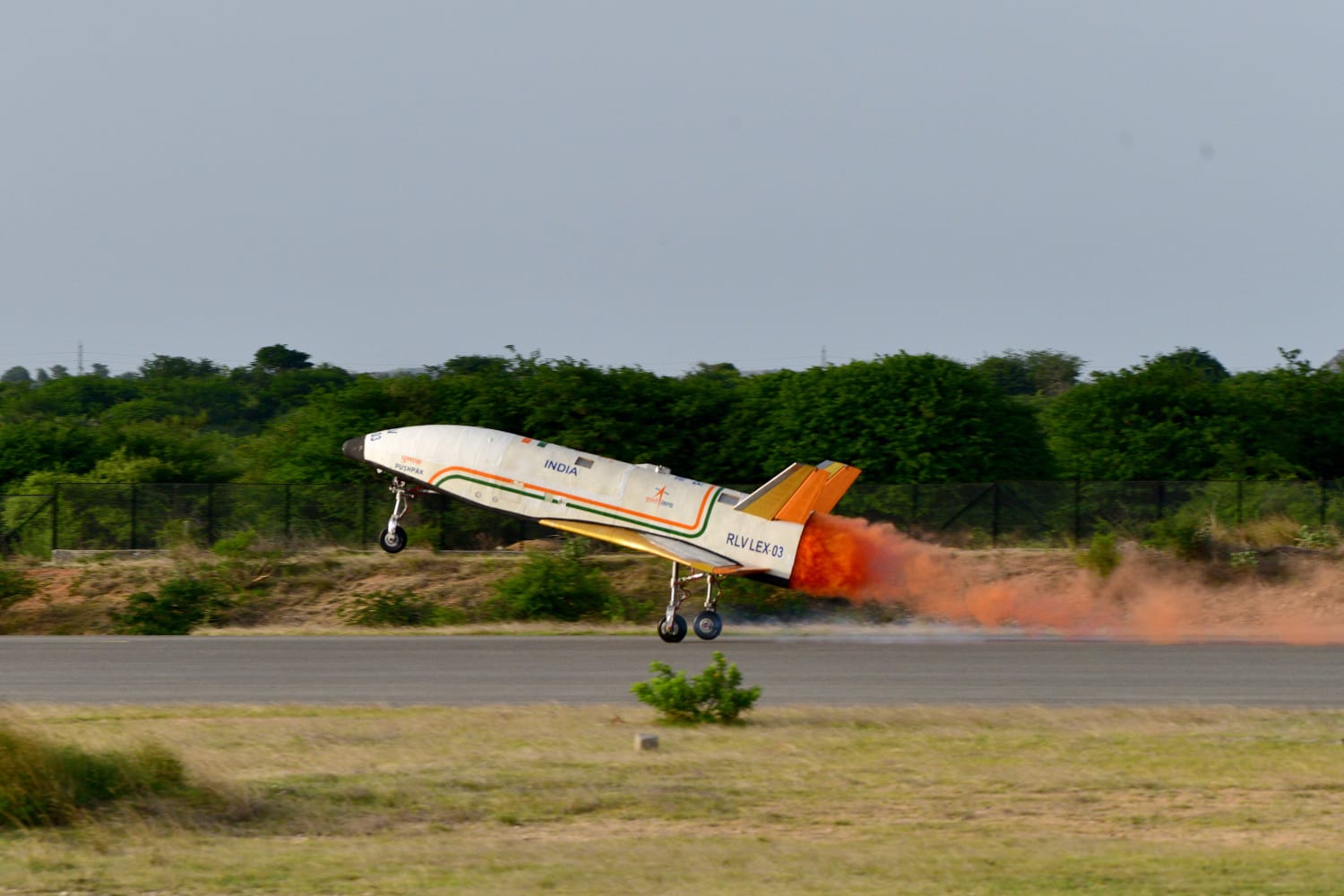The Indian Space Research Organisation (ISRO) has once again demonstrated its prowess in space technology by achieving a hat-trick with the successful landing of the Reusable Launch Vehicle (RLV) Pushpak. This milestone marks the third consecutive success in the RLV Landing Experiment (LEX), solidifying India’s position in reusable space vehicles.
According to the ISRO statement, the winged vehicle named ‘Pushpak’ was deployed from an Indian Air Force Chinook Helicopter at an altitude of 4.5 km. It was released from a point 4.5 km away from the runway. Pushpak then autonomously conducted cross-range correction maneuvers and proceeded toward the runway. Finally, it achieved a precise horizontal landing precisely at the centreline of the runway.
Due to its low lift-to-drag ratio aerodynamic design, the vehicle landed at a velocity exceeding 320 kmph, whereas commercial aircraft typically land at 260 kmph and typical fighter aircraft at 280 kmph. Upon touchdown, the vehicle deployed its brake parachute to reduce velocity to approximately 100 kmph. Subsequently, the landing gear brakes were utilized for further deceleration and to bring the vehicle to a stop on the runway. Throughout the ground roll phase, Pushpak autonomously utilized its rudder and nose wheel steering system to maintain stable and precise movement along the runway.
This mission simulated the approach and landing interface alongside high-speed landing conditions for a space vehicle’s return, reaffirming their expertise in acquiring crucial technologies for developing a Reusable Launch Vehicle (RLV).
Chairman of ISRO and Secretary of the Department of Space, S Somanath, commended the team for their dedication to sustaining a streak of successes in intricate missions. Dr. S Unnikrishnan Nair, Director of VSSC, highlighted that this ongoing success enhances ISRO’s confidence in pivotal technologies crucial for upcoming orbital re-entry missions.

